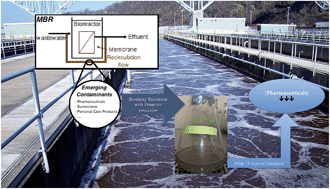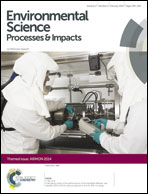Degradation of pharmaceuticals from membrane biological reactor sludge with Trametes versicolor†
Abstract
Emerging contaminants are a wide group of chemical products that are found at low concentrations in the environment. These contaminants can be either natural, e.g., estrogens, or synthetics, such as pesticides and pharmaceuticals, which can enter the environment through the water and sludge from wastewater treatment plants (WWTP). The growth of Trametes versicolor on membrane biological reactor (MBR) sludge in bioslurry systems at the Erlenmeyer scale was assessed and its capacity for removing pharmaceutical and personal care products (PPCPs) was evaluated. The ability of the fungus to remove hydrochlorothiazide (HZT) from liquid media cultures was initially assessed. Consequently, different bioslurry media (complete nutrient, glucose and no-nutrient addition) and conditions (sterile and non-sterile) were tested, and the removal of spiked HZT was monitored under each condition. The highest spiked HZT removal was assessed under non-sterile conditions without nutrient addition (93.2%). Finally, the removal assessment of a broad set of pharmaceuticals was performed in non-spiked bioslurry. Under non-sterile conditions, the fungus was able to completely degrade 12 out of the 28 drugs initially detected in the MBR sludge, achieving an overall degradation of 66.9%. Subsequent microbial analysis showed that the microbial diversity increased after 15 days of treatment, but there was still some T. versicolor in the bioslurry. Results showed that T. versicolor can be used to remove PPCPs in bioslurry systems under non-sterile conditions, without extra nutrients in the media, and in matrices as complex as an MBR sludge.


 Please wait while we load your content...
Please wait while we load your content...